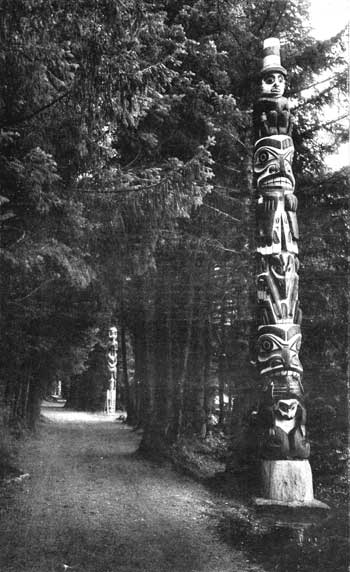![]()
MENU
|
Glimpses of Our National Monuments GENERAL INTRODUCTION |
In addition to the national parks, the National Park Service of the Department of the Interior has under its jurisdiction a second class of reservations called national monuments. The majority of these national monuments were created by presidential proclamation under the authority contained in the act of Congress of June 8, 1906, [1] entitled "An act for the preservation of American antiquities." This act authorizes the President of the United States "to declare by public proclamation historic landmarks, historic and prehistoric structures, and other objects of historic or scientific interest that are situated upon the lands owned or controlled by the Government of the United States to be national monuments." The newest monument, the George Washington Birthplace National Monument at Wakefield, Va., however, was established by act of Congress, and another congressional act has authorized the establishment of yet another monument when certain conditions specified have been complied with.
NATIONAL PARKS AND NATIONAL MONUMENTS CLOSELY
ALLIED
The national parks and national monuments are so closely allied that it is difficult to draw a hard and fast line between them. Generally speaking, national parks are areas preserved in Federal ownership by act of Congress because of their outstanding scenery, national in character. The national monuments, on the other hand, are reserved because of their historic, prehistoric, or scientific interest.
A list of the various national parks, with their location, area, and most important characteristics, is given on page IV.
TYPES OF NATIONAL MONUMENTS
The national monuments may be divided into four general classes—prehistoric, historic, geologic, and biologic. In the first two classes fall the ruins of the homes of the peoples who inhabited the United States before the coming of the white man and whose history is unknown except as it can be pieced together from the type of homes they built and the artifacts found in the ruins; and the ruins of structures built by the early white men, such as the old Spanish missions of the Southwest and the stockade at Pipe Spring, Ariz., built by the first settlers of the region. The geologic monuments contain volcanic phenomena, ledges of rock eroded in striking form, limestone caves, petrified trees and plants, and the fossil remains of prehistoric reptilian life. The biological national monument administered by the National Park Service contains a remarkable growth of trees, while another monument administered by the Department of Agriculture was created to preserve the Olympic or Roosevelt species of elk.
 Totem poles, Sitka National Monument, Alaska. |
ADMINISTRATION AND PROTECTION
At the present time [2] there are 64 national monuments. Of these, 32 are administered by the Department of the Interior, 16 by the Department of Agriculture, and 16 by the War Department. The monuments that are placed under the War Department are those of historic interest from the standpoint of military operations, while those under the Department of Agriculture are areas surrounded by national forests, which can be protected by the Forest Service in connection with its forest work. All the other national monuments so far created have been placed under the control of the Department of the Interior and are administered by the Director of the National Park Service in accordance with the act of August 25, 1916, [3] establishing the service. Lists of the national monuments administered by the National Park Service, Department of the Interior, and by the War Department and the Department of Agriculture are given on pages I, II, and III.
In order to coordinate the administration of these various reservations as far as possible, the Secretary of War and the Secretary of the Interior several years ago entered into an agreement for the transfer of certain of the national military and other parks and national monuments under the jurisdiction of the War Department to the Department of the Interior, to be administered by the National Park Service.
Legislation covering such transfer was introduced in the first session of the Seventieth Congress, but failed of final enactmnent before the close of that Congress. Should the transfer be made later as proposed, these various reservations would be classified as national historic parks, to distinguish them from the great scenic parks. Under the plan suggested, no active military cemeteries will be considered for transfer to the Department of the Interior from the War Department.
As increasing funds [4] have been made available by Congress for the administration of the national monuments, protection of these areas has been extended. Gradually full-time custodians on Government pay roll are replacing the part-time or volunteer custodians, residents of the localities in which the monuments are located who have so generously in the past devoted a portion of their time to monument affairs. The important southwestern national monuments, many of which have resident custodians, have been grouped under the general field supervision of Frank Pinkley, superintendent of southwestern monuments, who is also in immediate charge of the Casa Grande National Monument. His address is Coolidge, Ariz.
Wherever possible, with the funds available, repair and restoration work has been carried on in the ruined structures within the monuments, and in some cases camp grounds for motorists have been installed and roads and trails improved.
Rules and regulations regarding the government of the various national monuments are printed on pages 70 to 72, inclusive.
In the following short descriptions of the national monuments adminstered by the National Park Service information regarding rail and automobile approaches to the monuments and the names and addresses of the custodians are given.
1 Text of act given on pp. 72 and 73.
2 July 1, 1930.
3 Text of act given on pp. 73 and 74.
4 The annual appropriations made for the administration of the national monuments by the Interior Department are listed on p. 74.
|
|
Last Modified: Thurs, Oct 19 2000 10:00:00 pm PDT
glimpses2/glimpses0.htm

 Top
Top